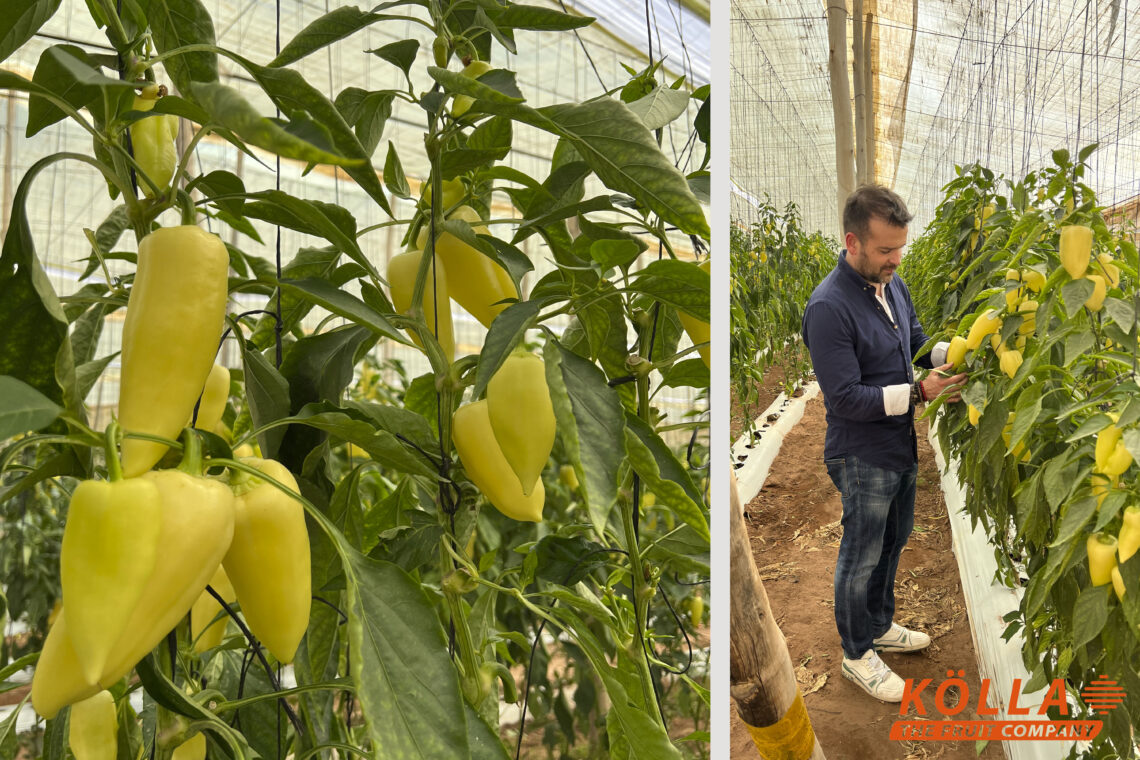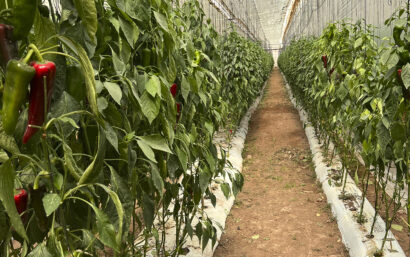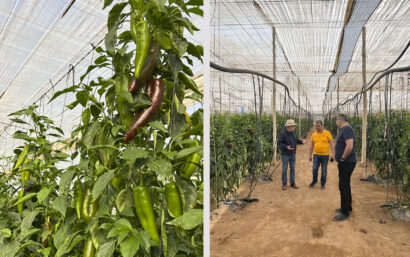Spain
Almeria
Overall, the pepper season in Almeria, Spain, is coming to an end. In isolated cases, such as in the Berja area in the higher regions of Almeria, small quantities are still being produced. Red and yellow peppers may still be available until the end of April. This development can also be seen in the coastal region of Roquetas and is due to the spring planting.
Murcia
To ensure continuous Spanish pepper production from April, we produce in Murcia from April to August. Already last week the season started successfully in Murcia and there are smaller quantities in all colours. From week 16/17 we expect sufficient quantities for long-term programmes and possible advertising.
A large part of the produce comes from glass greenhouses and only a little from outdoor harvesting – so they are comparable in quality to produce from the Netherlands.
Morocco
For us, Morocco is an important addition to the Spanish regions of Almeria and Murcia, which are still our main pepper production areas.
In order to plan new programmes and to get an idea of the current quantities and qualities, our product specialists Javier Casanova and Biagio Aufiero travelled to Morocco at the beginning of the month. There they visited four of our producers, some of whom have been with us for many years, around Agadir. Besides seasonal planning, important topics were: Production processes, qualities and quantities.
“In our cooperation, we attach great importance to the fact that our partners are Smeta certified and also have a water certificate,”
says the product manager for peppers Javier Casanova.
“In the long term, we imagine the cooperation with Morocco to be very fruitful. They supply good qualities at fair prices. So far, the production area of pointed peppers in Agadir is around 150 ha.”
Casanova continues: “These are good conditions for the KÖLLA Group to strongly integrate Morocco into our plans in the future.”
Turkey
Turkey, which is right behind China in quantitative production, produces more than 3 million (3,091,290) tonnes of peppers on an area of 80,239 hectares, which corresponds to a yield of 3.85 kg/m2. Thanks to Turkey’s geographical location and climate, peppers can be harvested 12 months a year, mainly in the Mediterranean, Aegean and Marmara regions.
Currently, there is a shortage of the California and Capia varieties, and in Demre, where the largest export quantities of the California chilli, Hungarian Charleston and other pepper varieties are grown, a shortage is also expected in 20-30 days. Some quantities can again be absorbed from the Antalya region, Mavikent. Summer planting will start around 15 June.
The following varieties are grown in Turkey:
- Green peppers (Dolma, Sivri and Kil Sivri)
- Capia paprika (pointed paprika)
- Hungarian paprika (red and yellow)
- Chilli and jalapeno peppers
- Peppers for drying



